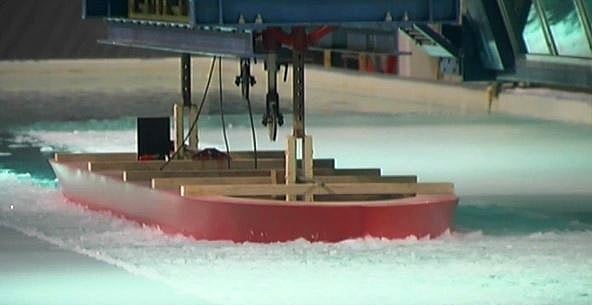Designed for winter conditions
For ESL Shipping it’s self-evident that new vessels are designed to operate in demanding winter conditions. In addition to ice-strengthened hull, a lot of other things have to be taken into account in order to adapt vessels to challenging conditions.
The ships are designed to temperature range from -30 to +30 degrees Celsius. In order to maximize the comfort in icy temperatures and to decrease energy consumption for heating, accommodation unit has an extra insulation and double windows. Extra insulation is installed to crew accommodation spaces and other temperature sensitive areas.
In machinery room, the ventilation system is equipped to heat up the incoming air. If the air is not heated, some places may freeze in winter temperatures of -30 degrees. Heating is especially important in LNG-powered ship as air circulation in machinery room is greater than diesel-powered ships.
In deck, some pipes are lifted from deck surface to for example half meter up to prevent problems if deck gets iced in winter. If the pipe opening is on deck surface, it gets iced easier and that requires extra work from crew if there is a need to open the hatch
Air handling unit is geared with energy saving solution that reduces need for cooling with 30 per cent and for heating around 45 percent compared to traditional system. In winter conditions it’s important to minimize the loss of already heated air as the heating is energy intensive.
